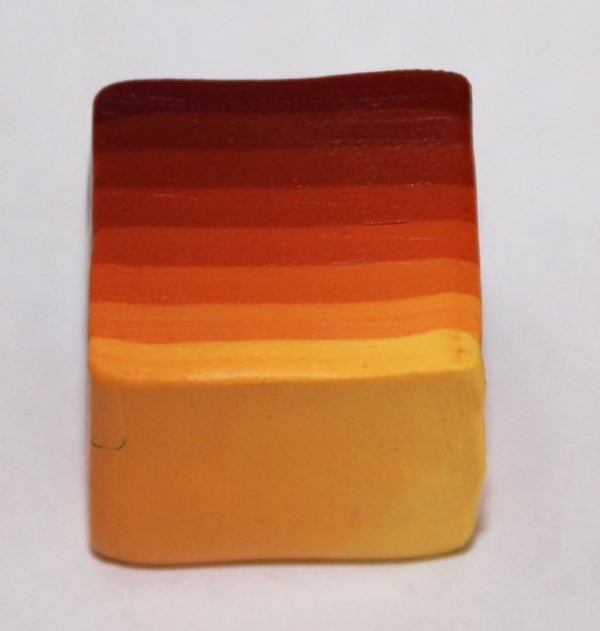
In polymer clay clay, mixing colours can be a bit of an art. The manufacturers offer their picks which change on a fairly random basis. Artists get to mix and mix again to meet whatever needs they have. Need a perfect periwinkle? Try mixes of Premo Turquoise and Fuschia. Too much of the Fuschia and you get more of a lavender. It’s still lovely though.
Mixing the colours for blends can be even more interesting since you’re planning for a whole colour range then. I’m fairly boring and work, mostly with dark to light blends, primarily with white, ecru or grey on the light end and out of the package colours on the dark end. Meg Newberg does some fancy colour work to get the pretty sunset shaded blend above. She offers a quick picture step through and a print out for the Skinner layout. Her Etsy shop contains further tutorials that use this blend or ones like it. By itself, this blend would be fabulous for backgrounds of pieces. Use a silhouette design on top of this to make a great tropical or landscape scene for pendants.


